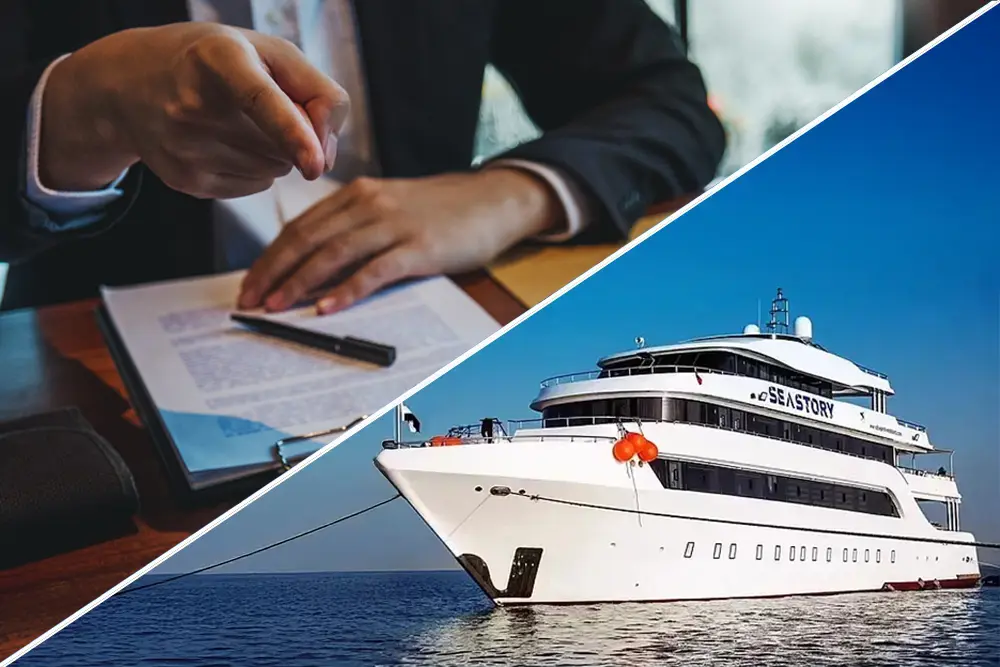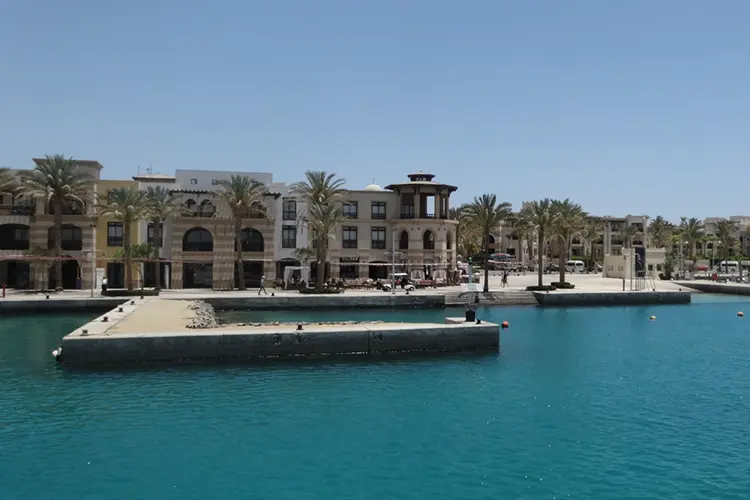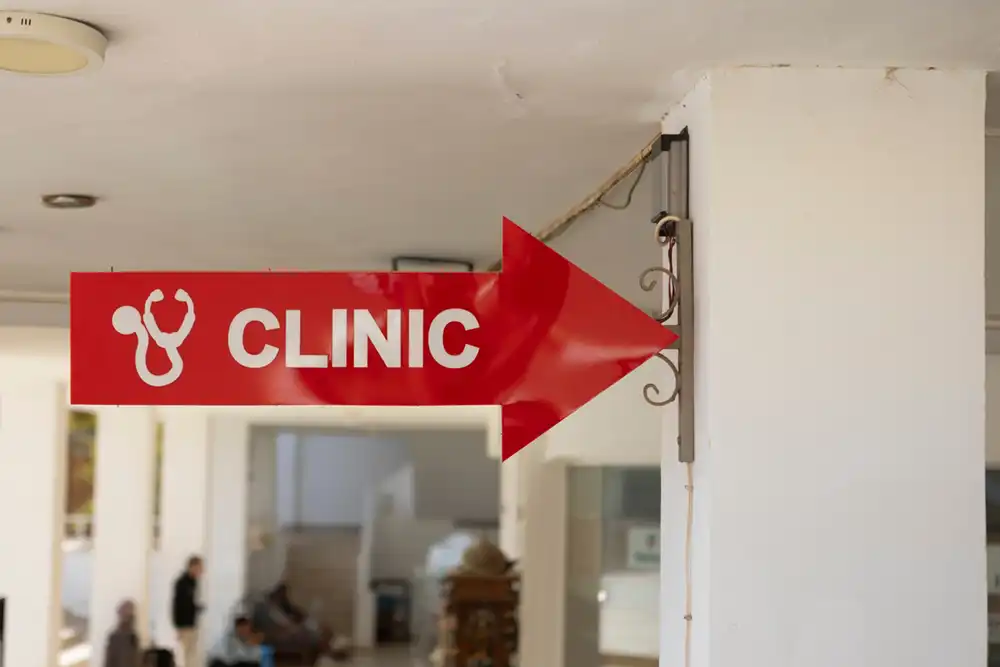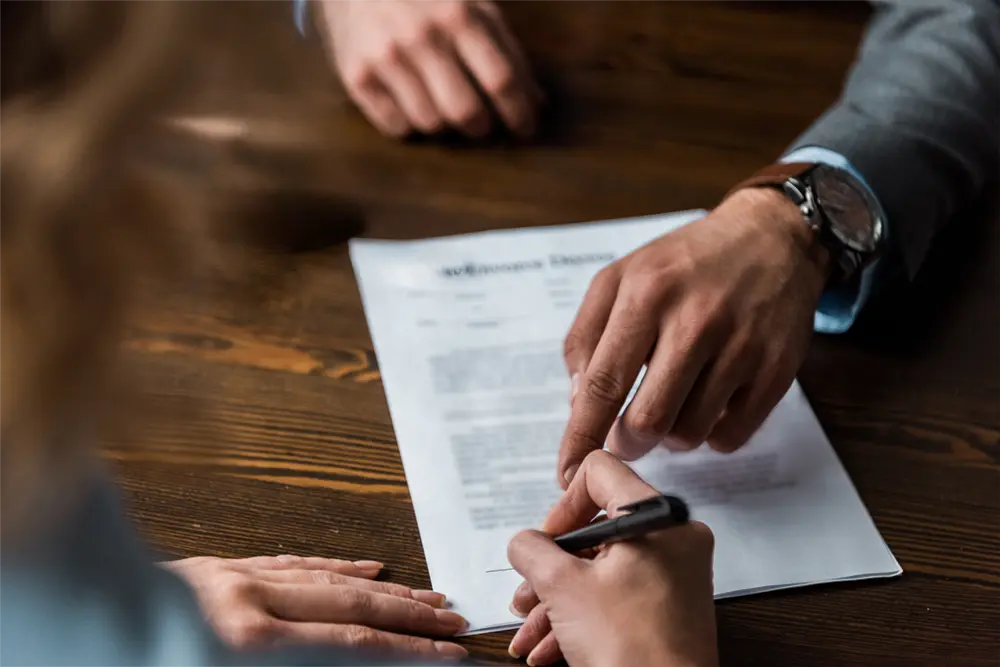
Survivors of the Sea Story liveaboard disaster recount how they were pressured into giving statements – described as ‘interrogations’ – just hours after being rescued
In the early hours of 25 November 2024, the Egyptian liveaboard Sea Story capsized in the Red Sea as it sailed overnight towards Sha’ab Sataya from Port Ghalib in Marsa Alam.
It would take more than 12 hours for the first survivors to be brought back to shore, but after a gruelling ordeal drifting in substandard, poorly equipped life rafts without food or water, they would be subjected to a grilling by Egyptian authorities that some have described as nothing short of an ‘interrogation’.
At that point, just 30 of the 46 divers and crew that were on board the vessel had been found – the captain and nine Egyptian crewmen, two dive guides – one Egyptian, one Spanish – and eighteen guests. Of the sixteen still missing, at least nine, and maybe more, were still trapped in the upturned vessel – but only five would be brought out alive.
The 16 divers who had been drifting in the life-rafts were collected by a privately-owned speedboat dispatched by the owner of Marsa Nakari resort and taken to a nearby liveaboard Star Jet.
Star Jet’s crew fed the survivors and gave them access to the showers while the Polish dive group on board gave them spare clothing and the use of their phones to call loved ones and embassies as the boat headed back towards Marsa Alam.
The Sea Story series:
- Part 1: Sea Story liveaboard survivor tells her story
- Sea Story survivors speak out – Part 2: The Rescue
- Sea Story survivors speak out – Part 3: Trapped
Media circus at the harbour

On their arrival in the harbour, the survivors were shuttled by Zodiac back to shore, but the welcome they received on their return appears to have mostly been for show.
‘I remember there being, like, 50 people there, and five or six ambulances with their blue lights flashing,’ said Frøydis Adamson, a criminal investigator for the Norwegian Police, describing the scene at the harbour. ‘I don’t know how they do it in Egypt, but we would never have done that in Norway!
‘They were asking us if we needed medical attention. [One of the survivors] had to crawl out of a broken window and had some cuts on his leg. Some person came to put a bandage on him while they were filming, and they bandaged and they bandaged and they bandaged – and when the filming was over, the bandage was done.
‘I remember looking down at him and thinking it looked like a three-year-old had played doctor, so it felt like it was only for show. Everything was only for show.’
Sarah Martin, who first told the survivors’ story to DIVE and who is, herself, a doctor, agreed: ‘It was all very much: take a picture, take a video, shake someone’s hand. It felt like a lot of the medical attention was very much for the pictures.’
Held under protest at the hospital

Some of the survivors were taken to hospital where, after having their injuries checked, they were confronted by police asking them to sign documents saying they didn’t think the accident was a criminal act or suspicious.
One of the survivors – who has asked not to be named – told DIVE how she and a friend were waiting for a taxi from the hospital back to the resort when a man arrived at the hospital and introduced himself as a ‘judge’, saying he had driven all the way from Cairo to talk to them.
‘We refused – we say we are not being interviewed now,’ she said, ‘but the judge keeps saying “just five minutes, it will be quick.” We kept refusing, and when our taxi driver arrived, he was instantly spoken to by staff and officials, and then told us the judge wanted five minutes of our time.
‘We became engaged in a full-on argument with hospital staff, the taxi driver and officials,’ she said, ‘all of whom were begging us to give five minutes. We said no and walked out to the car park and got into the back of the taxi – but the taxi driver was called back to the group of staff and officials, who were now standing outside in the car park.
‘One of the female hospital staff came to the car and begged us to come back inside for five minutes. We stayed put and said no, but the group continued to hold our driver.’
Eventually, the two survivors relented and said they would return to the hospital and give the judge his five minutes. He began by asking what posessions they had lost – which they said surprised them – but then started asking about the accident.
‘We told him there was no way we were talking about the event right now,’ said the survivor. ‘We needed to sleep and rest. We were exhausted, but the judge was determined to interview us there and then.
‘We were there for 30-40 minutes, and we kept telling the judge: “We are not talking to you.” Eventually, he told us that if we were to write that we were leaving the hospital of our own free will and would cooperate tomorrow, then he would let us go.
‘We wrote this on blank paper, handed it to him and left. We found our driver and, finally, we were transferred to Marsa Nakari Resort.’
Back at the resort

Back at the resort, the survivors, who had now been awake since around 2 am and were exhausted now that the adrenaline rush of the emergency had worn off, were told they must give statements to the authorities.
Despite having abandoned ship, stayed afloat and drifted in dilapidated life rafts for eight hours not knowing who else might even still be alive; despite having lost all of their possessions and having only scant opportinity to contact their loved ones, they were given no time to recover, nor – in some cases – grieve.
‘The statements took many hours into the night,’ said Sarah Martin, describing her experience. ‘When they first said we needed to make these statements, that was fine as there were people still missing – we wanted to help in any way we could, and it felt like something we needed to do, but we didn’t realise what they were for.
‘[One of the people I had escaped with] wrote quite a lengthy statement – I read it, and since my story was basically the same, I signed it – but it wasn’t very clear what it was for.
‘That statement turned out to be for the Chamber of Diving and Watersports [CDWS, Egypt’s governing body for diving and watersports activities], so they took that statement and then told us we had to talk to the police.
‘We said that we’d just given a long statement, but they said, “No, you need to give another statement; you need to do it again.”
‘I just don’t think it was the right time for a police investigation,’ said Sarah. ‘There were three judges, and they wrote everything in Arabic, and there was a lot of pressure to sign it.
‘We were all quite fed up at this point,’ said Sarah. ‘so eventually I just said I’ll sign it. What difference would it make? What was it even for?
‘Some of the survivors refused to sign their statements, but the judges made it seem like this wasn’t an option. I think we all knew that signing wasn’t the right thing to do, but we only had so much fight left in us.’
Sarah, who had injured her foot during the escape from the overturned liveaboard, was now struggling to walk, so after giving her statements, she went to the hospital in Marsa Alam, where they gave her painkillers, wrapped her injured limb, and sent her back to the hotel.
‘I felt like I was the criminal’

The interviews continued the next morning for those who hadn’t already given a statement. Frøydis Adamson recalls how she and her partner were asked to provide a written statement before having to give another in person.
‘I’m not that good at writing English,’ she said, ‘but I wrote my things down, and I thought I’d done my job, but then they called me and my partner in again.
‘We were about eight people in this room, and I had an interpreter as I was being interviewed by someone who only spoke Arabic. I realised the interpreter was a divemaster from Dive Pro [the company that operated Sea Story], but he seemed nice, and I liked him.
‘My partner was interviewed by another guy who spoke some English, but they were all listening into each other’s questions. It felt like it was for show – they asked him one thing and then asked me something else. It felt so messy, like they were just randomly throwing out questions and then writing whatever they wanted down.
‘Sometimes, the judge interviewing me asked a question, and then he would interrupt my answer with another question. He didn’t listen to what I had to say, and all they really wanted to ask was: “Do you blame this on anyone? Do you want to press charges?”
Frøydis, clearly falling back on her profession as a criminal investigator, told the ‘judge’ that she didn’t know enough about the incident to lay the blame for the capsizing on the crew, the boat or the weather, but the judge kept asking.
Following the interview, she was handed a four-page document written in Arabic and told she had to sign it. Frøydis protested, asking for it to be translated into either Norwegian or English so she could check that what was written in the document was an accurate representation of her statement.
The judge refused and told her to sign it anyway. Frøydis eventually signed her name but wrote a disclaimer at the bottom of the document saying that she had not had the statement translated – but this was deemed unacceptable.
‘He called me in later and said I had to sign without that sentence underneath. It felt really, really uncomfortable. I didn’t trust these people; I felt like I was the criminal, but I was so sick and tired of it all that I just wanted to get out of there, so I just signed it and left.
‘I wouldn’t have done that if I was in the UK or Norway,’ said Frøydis. ‘I would have really put my foot down and said: “This is not right.” But I wanted to go home, so I just did what they said I had to do.
‘I didn’t want to stir it up in case they made things uncomfortable for me or made it harder for me to get home, but it didn’t feel right, and it was certainly not a great investigation – if that’s what these interviews were.
‘We heard [one of the other survivors] took pictures of the Arabic statement and sent them to his embassy, and the judges got really mad at him and ripped the pages apart.’
‘We would never have signed’

The next day, after resting and getting what sleep they could, some – perhaps all – of the survivors were having second thoughts about what they might have signed.
‘The day after we were rescued, we were all sitting around a big table having dinner before getting on the bus to Hurghada, and some important guy came together with the manager of the dive centre,’ said Hissora Linse Gonzalez.
‘He said they were really sorry about what happened to us and said they had done everything they could to make us comfortable, and was there anything we wanted to add.
‘At that point,’ said Hissora, ‘I stood up and said: “We are very thankful for what you have done for us, giving us food and a bed, but I wish it had been taken into consideration that we were in complete shock, without any sleep, before taking our statements.
‘”You didn’t let us sleep or eat, and you pushed us to sign these pieces of paper before we had any rest, so we couldn’t talk to each other, or come out of the shock we were in. I think it was very not human, because you just cared about the signature.”
‘”If you had asked me the day after I had some sleep to sign this piece of paper, I would not have signed, neither me and most of us here, so we don’t agree how this was done.”‘
The other survivors agreed.
‘They already had the story made’
Not one of those interviewed, either here or by other media outlets, has said that the way they were treated was anything but unfair.
Survivors say they felt pressured into signing a document, the contents of which they could not be certain, and believe information was either removed from – or added to – their statements in an attempt by the authorities to control the narrative surrounding the disaster.
‘I used a phone with Google translate to see what my Arabic statement said before signing,’ said Sarah Martin. ‘I noticed information I had not given was present – such as the location of the dive sites the previous day.
‘Almost everything I said about safety equipment – or lack thereof – was missing from my statement,’ Sarah added. ‘When I raised this, I was told it would take a very long time to redo the statement if I wanted to change something.’
By the afternoon of 25 November, just hours after Sea Story capsized, media reports were quoting Red Sea Governor Major General Hanafi as saying ‘preliminary findings’ suggested the boat was ‘struck by a large wave’. Some reports said this had been confirmed by a survivor – although none that have come forward since have claimed as such.
Even before the survivors were giving their statements, Hissora believes the outcome of the so-called ‘investigation’ had already been determined.
‘When they were taking my statement,’ she said, ‘I remember saying to the judges: “When I finish, is there anything that you can give us, like the case number or something, so we can follow up to know what’s happening?”
‘And he said to me: “What do you want to know?”
‘I said: “What do you mean, what do I want to know? I want to know what happened.”
‘And he said: “You already know what happened. It was a big wave,” and he just kind of laughed.
‘I was thinking: “No, it wasn’t a big wave”, but he just said: “It was a big wave. There is nothing more to add.”
‘And so that same day,’ said Hissora, ‘just a few hours after we were rescued, they already had the story made.’
This article is part of a series following the stories of Sea Story’s survivors and their experiences dealing with their escape, rescue, and the aftermath of the disaster. Read Parts 1, Part 2 and Part 3 here.
Related articles
- Survivors speak of Sea Story liveaboard sinking cover-up
- Divers speak of safety failings on Sea Story sister ship
- Sea Story liveaboard survivors found trapped in cabins
- Divers and crew missing after Red Sea liveaboard Sea Story sinks
- Red Sea liveaboards are being cancelled – here’s why
- Conception liveaboard fire captain appeals manslaughter verdict - 5 December 2025
- New global dive-travel platform Scubago set to launch in 2026 - 3 December 2025
- DIVE’s Biggest Shots of 2025 - 1 December 2025


